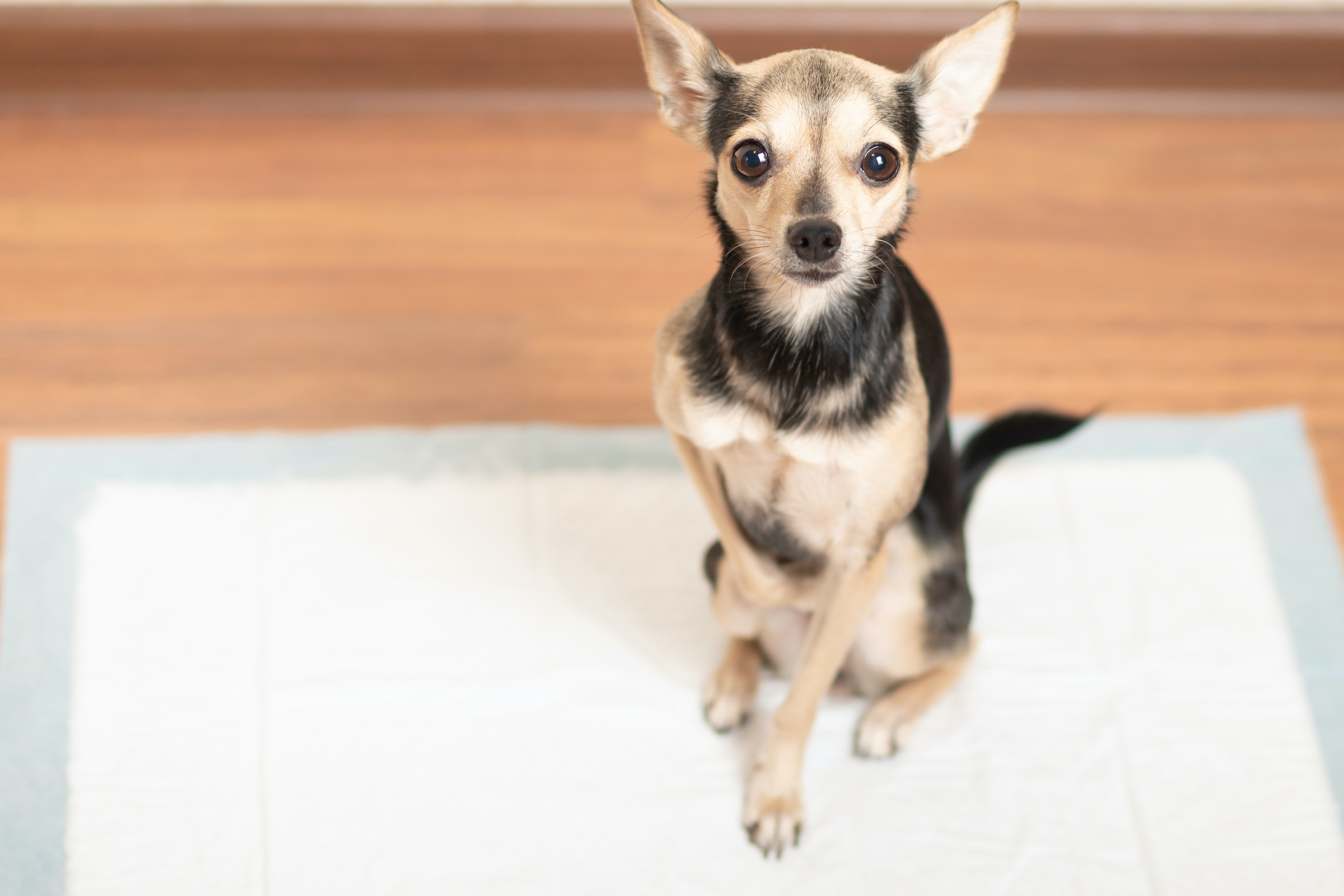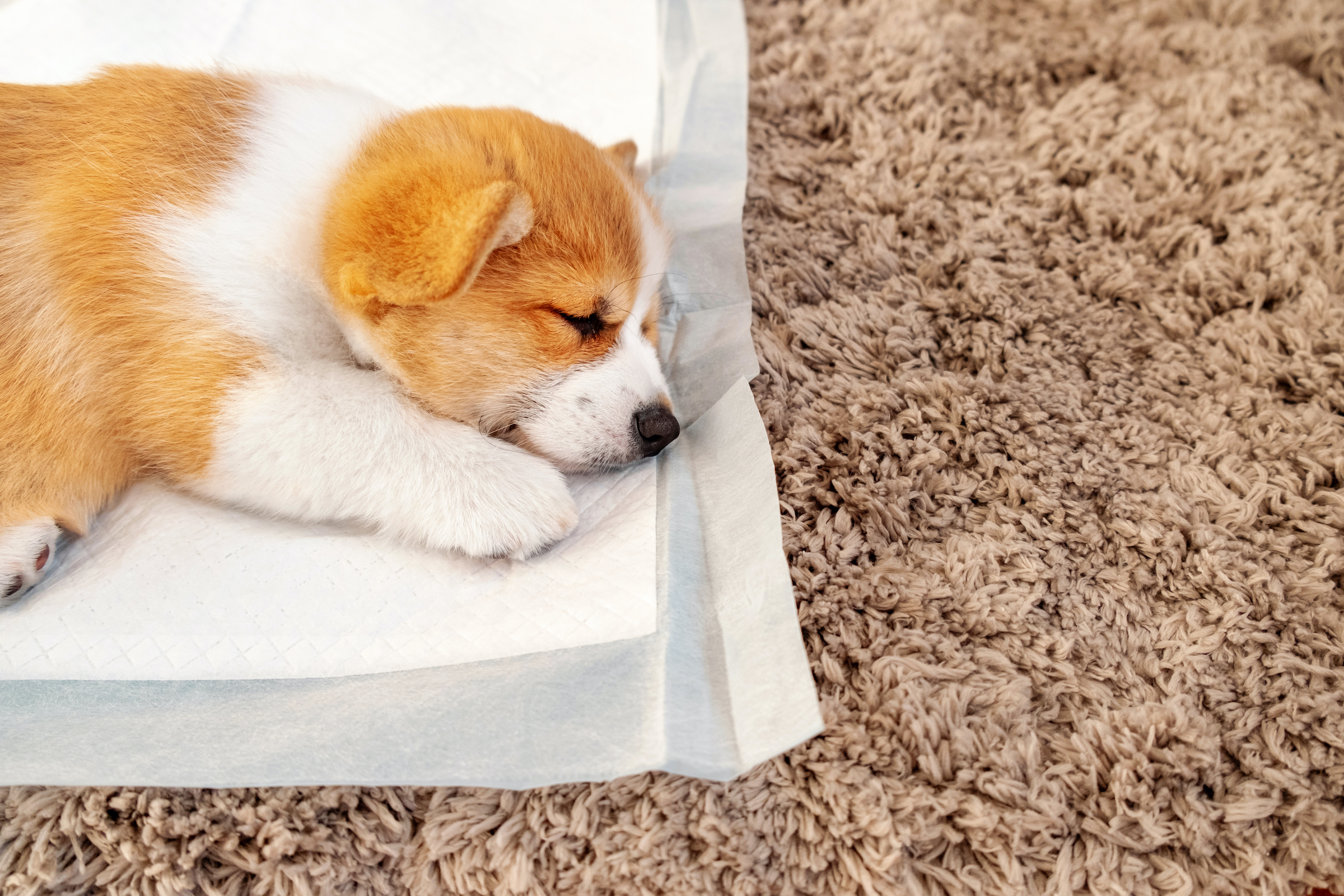Whether you’re bringing home a new puppy or a rescued adult dog, some level of potty training might be needed as everyone adjusts. It’s not the most fun way to bond with your pet, especially when accidents are in the equation, but learning how to potty-train a dog is certainly necessary for a clean and happy home.
Read on for some of the most tried-and-true potty-training tips, from handling accidents to timing potty breaks. Don’t be hard on yourself if it takes a second to get into an effective routine — you’re learning, too, after all.
How do you stop a dog from peeing and pooping in the house?
Whether you have a puppy or an adult dog at home, finding special surprises is never fun. Keeping your home accident-free doesn’t have to be difficult forever, though. Your solution depends on the reason why your dog won’t hold it, so you’ll need to look around to identify possible problems.
It’s important to rule out any medical issues first and foremost, so a trip to the vet is a great place to start. A dog that isn’t neutered or spayed may be more prone to marking behaviors, where they claim territory by releasing a small amount of urine, often on furniture and upright objects, according to VCA Hospitals.
Some dogs — particularly younger, older, and smaller ones — can’t hold their urine for as long as other pups. The American Kennel Club notes that there are also several behavioral issues that can result in incontinence, such as submissive and excitement urination, though these may need special treatments in addition to potty training.
For many puppies and dogs, though, all that’s needed is some classic potty training. Here’s what you need to know to take this on at home.

Is it easy to potty-train a dog?
Although no two dogs will respond to potty training the same way, most pups will get it after a while. If traditional training methods don’t work, you can always reach out to a canine behavior expert or even your local vet.
Many pet parents don’t know that potty training can take several months, regardless of a dog’s age or training skills, so they get frustrated when the changes don’t happen quickly. Remember, progress is not linear, and an accident doesn’t equal failure.
What’s the hardest dog to potty-train?
Generally, it’s harder to train young puppies — under 3 months of age. They’re not old enough to retain directions yet, though they may begin to make connections between actions and praise or consequences.
Still, it’s smart to start the potty-training process as soon as your puppy comes home, or around 8 weeks of age, even if only to prevent accidents. At this time, you can use indoor potty pads instead of taking your pup outside.
Toy breeds may also be difficult to potty-train, by no fault of their own. These little dogs have small bladders and may be unable to wait as long as others to relieve themselves. Potty pads will be great in these situations, as well.
How to potty-train a dog
No matter your dog’s age or training history, start with establishing a consistent, everyday schedule for potty breaks. After a while, your furry friend will come to know that she will soon have a chance to relieve herself — resulting in fewer accidents in the house.
Plan potty breaks
Another smart way to prevent no-nos is to carefully plan the timing of your dog’s potty breaks. By taking her out 15–30 minutes after a meal, when canines typically need to eliminate, you can increase the chances that all your dog’s business will be taken care of outside, according to VCA Hospitals. This can be a tricky step for owners who free-feed their pups, as their eating and bathroom habits can be more unpredictable.
Reward your dog for success
When your dog goes potty where she’s supposed to, be sure to reward her with praise and treats — whatever motivates her. Do this immediately after she goes to help her make the mental connection between action and reward. Overall, this step is vital in helping your dog understand what she’s supposed to do.
As for punishment — it does more harm than good. Accidents will happen! Instead of scolding your pet or rubbing her nose in her accident, take her outside as soon as possible. The Humane Society of the United States recommends that, if she continues potting in her designated spot, reward her and get back on track immediately.
Whatever happens, clean any accidents thoroughly. Even better, make sure your pup won’t have access to that spot anymore, as dogs are more likely to relieve themselves in a spot where they already smell urine — even their own!
As you potty-train your dog, keep an eye out for any behavior that might indicate she needs to go outside: “nose to the grindstone” sniffing, lingering near the door, or even following you around. Everyone will feel a lot better when accidents are prevented, after all, but that requires a bit of diligence on your part.




